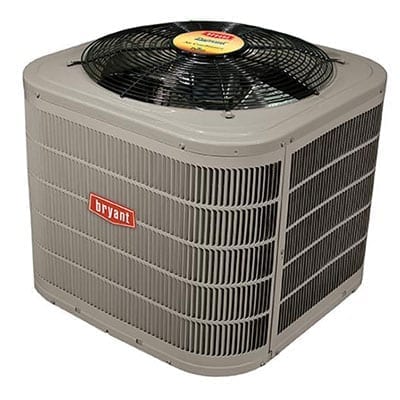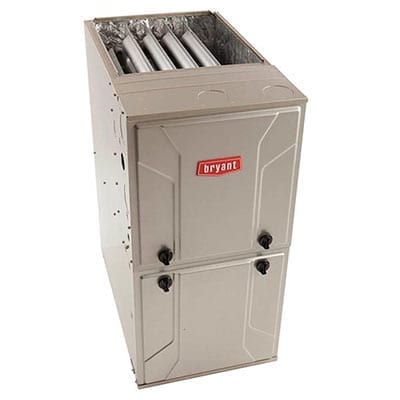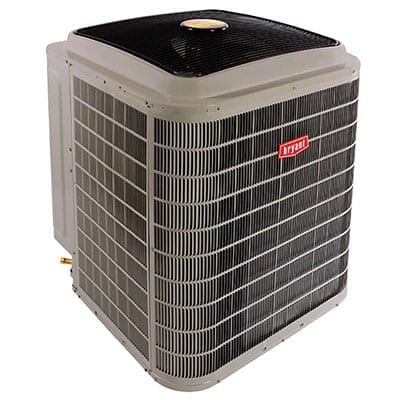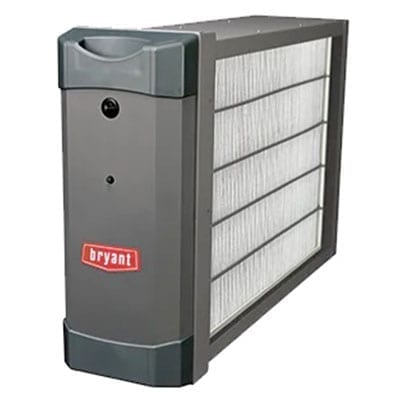Commercial HVAC for Co-Working Spaces
Co-working spaces are on the rise, catering to businesses of all sizes in office buildings, commercial buildings, and residential buildings. These spaces offer flexible floor plans for various types of businesses. In these commercial buildings, maintaining efficient climate control and proper ventilation in office spaces and working areas is paramount. The efficient climate control provided by the HVAC system, including heat pumps and proper ventilation, is crucial for ensuring comfort and productivity within these shared office spaces. The indoor unit plays a key role in maintaining the desired temperature and air quality. A well-designed HVAC system with smart thermostats not only regulates heat and temperature but also controls humidity levels and enhances air quality with the help of sensors, contributing to a conducive working atmosphere in commercial buildings for all occupants. This blog post delves into the significance of effective HVAC systems in office buildings and co-working spaces, exploring how they impact the overall functionality and appeal of such business environments. The heat control provided by these systems is crucial for maintaining a comfortable and productive atmosphere in the office.
Exploring Types of HVAC Systems for Co-Working Spaces
Centralized Systems
Centralized HVAC systems are commonly utilized in commercial buildings, such as office spaces, shopping malls, and other business establishments, due to their ability to efficiently provide heating and cooling throughout the entire area. These commercial HVAC systems are designed to control the heat in office spaces. They typically consist of a single unit that ensures uniform comfort levels, making them ideal for commercial HVAC maintenance. The centralized approach is beneficial for maintaining consistent temperatures in commercial buildings, including office spaces, by promoting a comfortable working environment through effective HVAC maintenance.
Centralized commercial HVAC units are especially advantageous in large open-plan office buildings, shopping malls, and co-working spaces where multiple workstations and common areas need to be heated or cooled simultaneously. For example, in a spacious office or shopping malls with an open layout, a centralized HVAC system can effectively distribute heat in buildings, ensuring optimal comfort for all occupants.
Decentralized Systems
Decentralized HVAC systems, such as split systems, offer individual temperature control in various zones or rooms within office buildings, shopping malls, and co-working spaces. This type of HVAC unit allows different areas of the office buildings to have customized heat settings based on specific needs and preferences. In a decentralized setup, separate commercial HVAC systems are installed in different zones or rooms of a building, enabling independent regulation of heat and temperatures according to occupancy and usage patterns in working areas.
For instance, in a multi-level shopping mall building with distinct work areas on each floor, decentralized HVAC units can be strategically placed to cater to the unique thermal requirements of each level, ensuring optimal heat distribution. This flexibility allows occupants in different working areas and shopping malls to adjust the heat in their immediate surroundings without affecting other parts of the building’s commercial HVAC system. Decentralized systems contribute to energy efficiency in buildings by only conditioning occupied zones while leaving unoccupied areas at set-back temperatures—a feature that aligns with sustainable practices often valued by modern businesses, such as shopping malls. These systems help manage heat effectively and reduce energy consumption.
Hybrid Systems
In certain cases, hybrid HVAC systems may offer an ideal solution for meeting diverse heating and cooling demands within building spaces, such as co-working spaces and shopping malls. A hybrid approach combines elements from both centralized and decentralized systems to create an integrated solution tailored specifically for the spatial layout and occupancy patterns of a particular co-working environment. This integrated solution aims to optimize the building’s heat management.
For example, in a medium-sized co-working facility comprising both private offices and communal workspaces, integrating aspects from centralized heating, ventilation, and air conditioning (HVAC) solutions could optimize comfort while maximizing energy efficiency in the building. By strategically leveraging this combination approach in different working areas of the building based on usage requirements—such as high-traffic communal zones and low-occupancy private offices—a hybrid system can deliver precise climate control tailored to distinct spatial characteristics.
Significance of HVAC Systems in Shared Work Environments
Comfort and Productivity
Commercial HVAC systems play a crucial role in maintaining a comfortable and conducive environment for individuals working together in co-working spaces. These systems are essential for building a pleasant atmosphere that promotes productivity and collaboration. Proper temperature regulation provided by the HVAC system ensures that the working areas in the building are neither too hot nor too cold, promoting a comfortable atmosphere for enhanced productivity. High-quality air conditioning in working areas can regulate humidity levels, preventing discomfort caused by excessive moisture or dryness in the air.
A well-maintained HVAC system also contributes to creating an optimal environment that supports the overall well-being of co-workers. By ensuring clean and fresh air circulation in a shopping mall co, it helps minimize the risk of respiratory issues and allergies among individuals sharing the same space. This not only enhances their physical health but also fosters mental well-being, leading to increased job satisfaction and improved performance at the shopping mall co.
Equipment Longevity and Damage Prevention
In addition to enhancing comfort and well-being, commercial HVAC systems play a crucial role in preserving office equipment within co-working spaces. Consistent temperature control prevents extreme heat or cold from damaging sensitive electronic devices such as computers, printers, and servers. Moreover, proper humidity management safeguards these devices from potential harm caused by moisture-related issues like corrosion or condensation.
HVAC Considerations for Co-Working Spaces in Shopping Malls
Shared Infrastructure
Co-working spaces located in shopping malls must consider the shared infrastructure. The HVAC system needs to integrate seamlessly with the mall’s existing systems. This integration ensures efficient use of resources and prevents any conflicts arising from separate systems.
Collaboration with mall management is crucial to address these considerations effectively. By working closely with the management, co-working spaces can ensure that their commercial HVAC system aligns with the overall infrastructure of the shopping mall. This collaboration allows for a comprehensive assessment of the space’s requirements and potential challenges related to shared infrastructure.
It’s essential to note that due to limited space within shopping malls, co-working spaces may face constraints. Therefore, integrating into the existing structure becomes even more critical for optimal functionality.
Noise Reduction Measures
Implementing noise reduction measures is vital for co-working spaces in shopping malls. The proximity of other shops or offices demands a high level of consideration regarding noise disturbances from the HVAC system. Utilizing soundproofing materials and strategic placement of equipment can significantly minimize disruptions caused by operating HVAC units.
By addressing noise concerns proactively, co-working spaces can maintain a conducive environment for productivity while respecting neighboring establishments’ need for a peaceful ambiance.
In addition:
-
Collaboration with mall management facilitates seamless integration.
-
Soundproofing materials help minimize disturbances from HVAC operations.
Single vs Multi-Split Systems in Co-Working Environments
Single Split Systems
Single split systems are ideal for smaller co-working spaces where individual temperature control in separate rooms or areas is required. These systems consist of a single outdoor unit and one indoor unit, making them suitable for offices with limited space. They provide efficient heating and cooling for small to medium-sized co-working spaces, ensuring that each area can maintain its desired temperature independently.
For example, in a co-working space with private offices and shared work areas, single split systems allow the occupants of each office to set their preferred temperature without affecting other zones. This level of individual control can enhance comfort and productivity within the workspace.
Multi-Split Systems
On the other hand, multi-split systems offer flexibility by allowing multiple indoor units to be connected to a single outdoor unit. This makes them well-suited for larger co-working spaces that require efficient heating and cooling across different areas. With multi-split systems, various sections of the workspace can be maintained at different temperatures simultaneously, catering to diverse preferences within the same environment.
In large open-plan co-working spaces or facilities with multiple private offices and meeting rooms, multi-split systems ensure uniform comfort throughout the entire area without compromising energy efficiency. By connecting several indoor units to a single outdoor unit, these systems optimize space utilization while delivering consistent climate control.
Choosing Between Single and Multi-Split Systems
The decision between single split system and multi-split system installation depends on several factors such as the size and layout of the co-working space as well as budget considerations. For smaller co-working environments with limited space availability or individual room requirements, a single split system may be more practical due to its simplicity and cost-effectiveness.
Conversely, larger co-working spaces benefit from the versatility offered by multi-split setups which accommodate varying heating and cooling needs across different zones within an office setting. Considering long-term operational costs is essential when deciding between these two options since inefficient choices might lead to increased expenses over time.
VRF and VRV Systems for Enhanced Climate Control
Energy-Efficient Solutions
Variable Refrigerant Flow (VRF) and Variable Refrigerant Volume (VRV) systems are efficient climate control solutions ideal for co-working spaces. They offer precise temperature control in different zones, ensuring a comfortable environment for all occupants. These systems use refrigerant to transfer heat energy, allowing simultaneous heating and cooling in various areas of the workspace. This means that while one section may require cooling, another might need heating, and the VRF/VRV system can efficiently cater to these diverse needs.
These advanced HVAC solutions provide energy-efficient climate control, minimizing energy wastage by only delivering the necessary amount of heating or cooling to each zone. By adjusting the refrigerant flow based on real-time demands, they eliminate unnecessary energy consumption associated with traditional HVAC systems. For example, if certain areas of a co-working space are unoccupied at specific times of the day, these zoning systems can reduce energy usage in those zones without affecting other occupied areas.
Individualized Comfort
One significant advantage of VRF/VRV systems is their ability to provide individual temperature control within a shared workspace. Each zone can have its own thermostat for occupants to adjust according to their preferences. This level of personalization ensures that everyone working in the co-working space can enjoy a comfortable atmosphere tailored to their liking.
Moreover, these systems allow for outdoor units to be connected with multiple indoor units across different zones within the workspace. This setup enables more precise climate control as each area’s requirements are addressed independently based on factors such as occupancy levels and sunlight exposure.
Maintenance Benefits
In addition to providing enhanced comfort and efficient operation, VRF/VRV systems also offer maintenance benefits for co-working spaces. Since these systems use less ductwork compared to traditional air conditioning setups, they require less frequent cleaning and upkeep related to ventilation systems’ components like evaporator coils.
Furthermore, due to their design which allows continuous monitoring and adjustment based on demand fluctuations throughout different areas of a building or workspace, VRF/VRV setups often experience reduced wear-and-tear on components compared with single-split or multi-split air conditioner configurations commonly found in similar environments.
By implementing VRF or VRV technology in commercial settings like co-working spaces where individualized comfort is essential alongside efficient operations management – businesses not only ensure consistent occupant satisfaction but also benefit from long-term cost savings through optimized energy usage.
Advantages and Disadvantages of Different HVAC Systems
Centralized HVAC Systems
Centralized HVAC systems provide uniform temperature control throughout a co-working space. They ensure that every area within the facility experiences consistent cooling or heating. However, the installation and maintenance of centralized systems can be complex. These systems involve extensive ductwork, which may require significant planning and structural modifications during installation. Regular maintenance is crucial to keep these units operating efficiently.
An advantage of centralized HVAC systems is their ability to maintain a constant temperature across large areas without the need for multiple units. This can result in cost savings due to efficient energy usage when compared to decentralized options. On the downside, though, these systems may incur higher initial costs due to their complexity in design and installation.
Decentralized HVAC Systems
Decentralized HVAC systems, on the other hand, offer flexibility by providing individual climate control for different zones within a co-working space. This means that occupants can adjust temperatures based on their preferences in various areas of the building without affecting others’ comfort levels. However, this flexibility comes at a price – decentralized systems are generally more expensive to install and maintain than centralized ones.
One benefit of decentralized HVAC units is their zoning capabilities, allowing specific areas to be cooled or heated independently from others as per requirement. For instance, if certain parts of a co-working space are not frequently used or have varying occupancy levels throughout the day, decentralized units can help optimize energy consumption by adjusting temperatures accordingly.
VRF/VRV Systems
VRF (Variable Refrigerant Flow) or VRV (Variable Refrigerant Volume) systems also present unique advantages and disadvantages for commercial spaces like co-working environments. These innovative solutions allow individual temperature control for different zones similar to decentralized setups but with potentially higher upfront costs compared to traditional centralized options.
The key advantage lies in VRF/VRV’s ability to provide precise climate management where each indoor unit adjusts its refrigerant flow based on specific requirements within its zone while sharing resources efficiently with other units connected through one outdoor unit.
Energy-Efficient and Noise-Reducing HVAC Solutions
Energy Efficiency
Commercial HVAC systems play a crucial role in maintaining comfortable indoor temperatures while managing energy consumption. Implementing energy-efficient HVAC solutions is essential for co-working spaces to minimize operational costs and reduce environmental impact. High-efficiency units, equipped with advanced features such as economizers and heat recovery, are effective in optimizing energy usage. By utilizing these technologies, co-working spaces can significantly lower their electricity bills while ensuring consistent cooling and heating performance.
Proper insulation of ductwork is another vital strategy to enhance energy efficiency. Well-insulated ducts prevent air leakage, which can lead to significant energy wastage. By minimizing the loss of conditioned air during its transfer through the ventilation system, co-working spaces can achieve improved overall system efficiency. This not only contributes to cost savings but also aligns with sustainable practices by reducing unnecessary energy consumption.
Noise Reduction
Creating a conducive work environment within co-working spaces involves addressing potential sources of disruption, including noise from HVAC systems. Insulated ducts or soundproof enclosures are effective measures that help mitigate unwanted noise levels generated by the operation of commercial HVAC equipment. These noise-reducing features contribute to fostering a peaceful atmosphere beneficial for concentration and productivity among co-workers.
In addition to implementing specific noise-reducing components, selecting appropriate locations for indoor units is crucial in minimizing disturbances caused by the operation of the HVAC system. Placing indoor units strategically away from work areas or using barriers effectively reduces the transmission of operational sounds into shared office spaces.
Air Quality and Ventilation Essentials in Co-Working Spaces
Importance of Proper Ventilation
Adequate ventilation is essential for maintaining good indoor air quality in co-working spaces. Without proper ventilation, indoor air can become stale and filled with pollutants, leading to discomfort and health issues among occupants. Effective ventilation ensures a constant flow of fresh air into the workspace, creating a comfortable environment for individuals to work productively.
Improper airflow can result in the buildup of allergens, dust, and other contaminants within the indoor environment. This can lead to respiratory problems and allergies among co-working space users. To prevent this, it’s crucial to ensure that the HVAC system provides consistent airflow throughout the entire space.
Regular maintenance of air filters is also vital for preserving good indoor air quality. Filters should be cleaned or replaced as needed to remove pollutants and allergens from the air. By doing so, occupants are less likely to experience health issues related to poor indoor air quality.
Enhancing Air Quality
In addition to regular filter maintenance, implementing additional measures such as installing air purification systems or incorporating plants within the co-working space can further enhance air quality. Air purification systems help eliminate airborne particles and odors, contributing to a healthier working environment.
Plants not only add aesthetic value but also serve as natural purifiers by removing toxins from the air through photosynthesis. They contribute significantly towards creating a refreshing atmosphere by increasing oxygen levels while reducing carbon dioxide levels indoors.
Implementing these strategies alongside an energy-efficient HVAC system not only ensures optimal comfort but also promotes overall well-being within co-working spaces.
Cost and Maintenance Considerations for Commercial HVAC
Initial Cost vs. Long-term Savings
When setting up a commercial HVAC system in a co-working space, it’s crucial to weigh the initial installation cost against long-term energy savings. While the upfront expenditure may seem substantial, investing in an energy-efficient system can lead to significant cost savings over time. For instance, opting for modern commercial HVAC equipment with high Energy Star ratings can result in lower utility bills due to reduced energy consumption.
In addition to considering energy efficiency, evaluating the HVAC design is essential. A well-designed system that suits the specific needs of a co-working space can contribute to optimal performance and minimal wastage of resources. By choosing an appropriately sized unit and ensuring proper insulation and ductwork, co-working spaces can enhance comfort while maximizing energy efficiency.
Regular Maintenance for Optimal Performance
Regular maintenance plays a pivotal role in preserving the functionality of commercial HVAC systems within co-working spaces. Filter replacements are vital as clogged filters obstruct airflow, leading to increased energy consumption and decreased air quality. Routine coil cleaning is equally important since dirty coils impede heat transfer and strain the entire system.
Moreover, periodic inspections by qualified professionals are indispensable for identifying potential issues before they escalate into major problems. Early detection allows for timely interventions that prevent extensive damage or costly breakdowns. By addressing minor malfunctions promptly through proactive maintenance measures, co-working spaces can avoid disruptions in their operations while extending the lifespan of their commercial HVAC units.
Partnering with Experienced Professionals
Collaborating with experienced HVAC professionals is instrumental in minimizing downtime and swiftly resolving any issues that arise within commercial spaces like co-working areas. These experts possess comprehensive knowledge about various types of commercial HVAC systems along with hands-on experience in troubleshooting common problems encountered by such setups.
Conclusion
The selection of HVAC systems for co-working spaces is a critical decision that directly impacts the comfort, productivity, and well-being of individuals within these shared work environments. Considering factors such as energy efficiency, noise reduction, air quality, and maintenance costs is imperative for creating an optimal working atmosphere. Whether opting for single or multi-split systems, VRF or VRV setups, each choice comes with its own set of advantages and disadvantages that must be carefully weighed. The location of the co-working space within a shopping mall adds another layer of complexity to the HVAC considerations. Implementing the most suitable HVAC solution tailored to the specific needs of a co-working space is essential for fostering a conducive and pleasant work environment.
For those involved in establishing or managing co-working spaces, conducting a comprehensive assessment of HVAC requirements and seeking professional guidance can significantly contribute to creating an inviting and comfortable workspace for tenants and visitors alike.
Frequently Asked Questions
What are the key considerations for HVAC systems in co-working spaces?
Co-working spaces require HVAC systems capable of handling varying occupancy levels and providing individualized climate control. Noise reduction, energy efficiency, and air quality are crucial factors to consider.
How do VRF and VRV systems enhance climate control in co-working spaces?
VRF (Variable Refrigerant Flow) and VRV (Variable Refrigerant Volume) systems offer precise temperature control for different zones within a co-working space. They also provide energy-efficient operation by adjusting refrigerant flow based on demand.
What are the advantages of multi-split HVAC systems over single-split systems in co-working environments?
Multi-split systems allow independent temperature control for multiple areas within a co-working space, offering greater flexibility. They also tend to be more efficient than single-split systems.
Why is ventilation essential in co-working spaces?
Proper ventilation ensures the circulation of fresh air while expelling indoor pollutants, contributing to better indoor air quality. In shared work environments like co-working spaces, effective ventilation helps maintain a healthy and comfortable atmosphere for occupants.
How can commercial HVAC solutions contribute to energy efficiency in co-working spaces?
Energy-efficient HVAC solutions such as high-efficiency units, smart thermostats, and zoning capabilities help reduce overall energy consumption while maintaining optimal comfort levels within a co-working environment. This can lead to cost savings and environmental benefits.
Related Information
Commercial HVAC for Consignment Shops
Commercial HVAC for Community Theaters
Commercial HVAC for Comic Book Stores
Commercial HVAC for Coffee Shops
Commercial HVAC for Clock Shops
Commercial HVAC for Clinics
Commercial HVAC for Cigar Lounges
Commercial HVAC for Chiropractic Offices
Commercial HVAC for Childcare Centers
The Primary Services Provided By Our Local HVAC Company
Areas We Service
Click on the area below to see what your neighbors are saying about their recent experiences with our company.
Our Locations
14913 SE Kellogg Ave
Milwaukie, OR 97267, USA
4409 SE 24th Ave, Suite 35
Portland, OR 97202, USA




